The charts developed in the 1930s, and used to train librarians and teachers, explain how to process information and come up with relevant answers.
These amazingly detailed and well-thought charts were discovered by the librarian Char Booth in a throw-away pile at her library school in 2003.
She rescued the posters, and asked Gabriel Jaramillo at the Claremont Colleges Digital Library to make high-quality digital versions.
These infographics were produced under the supervision of a respected librarian, Ruby Ethel Cundiff. They were being used in the 1930s and 1940s as instructional materials during the Library School Course classes at the George Peabody College for Teachers.
George Peabody College for Teachers was a private teachers’ college in Nashville, Tennessee. It was known for its innovative teaching methods and its commitment to social justice.
When you look at the charts, you know why the college was so innovative. These charts should be used by machine learning experts to train their artificial intelligence tools.
Every task has its own path to be accomplished. Everything is classified and described. Every question finds the right question if you provide the proper prompt. Everything can be done according to a clear algorithm.
The only difference is that the skill of processing information humans should learn is now passed to computers.
All the infographics were originally revealed by Char Booth at her Flickr profile Bibliovox – and it’s where you can find high-resolution files if you want to study them in detail.
Vintage library charts and infographics
From card catalog to the book on the shelf
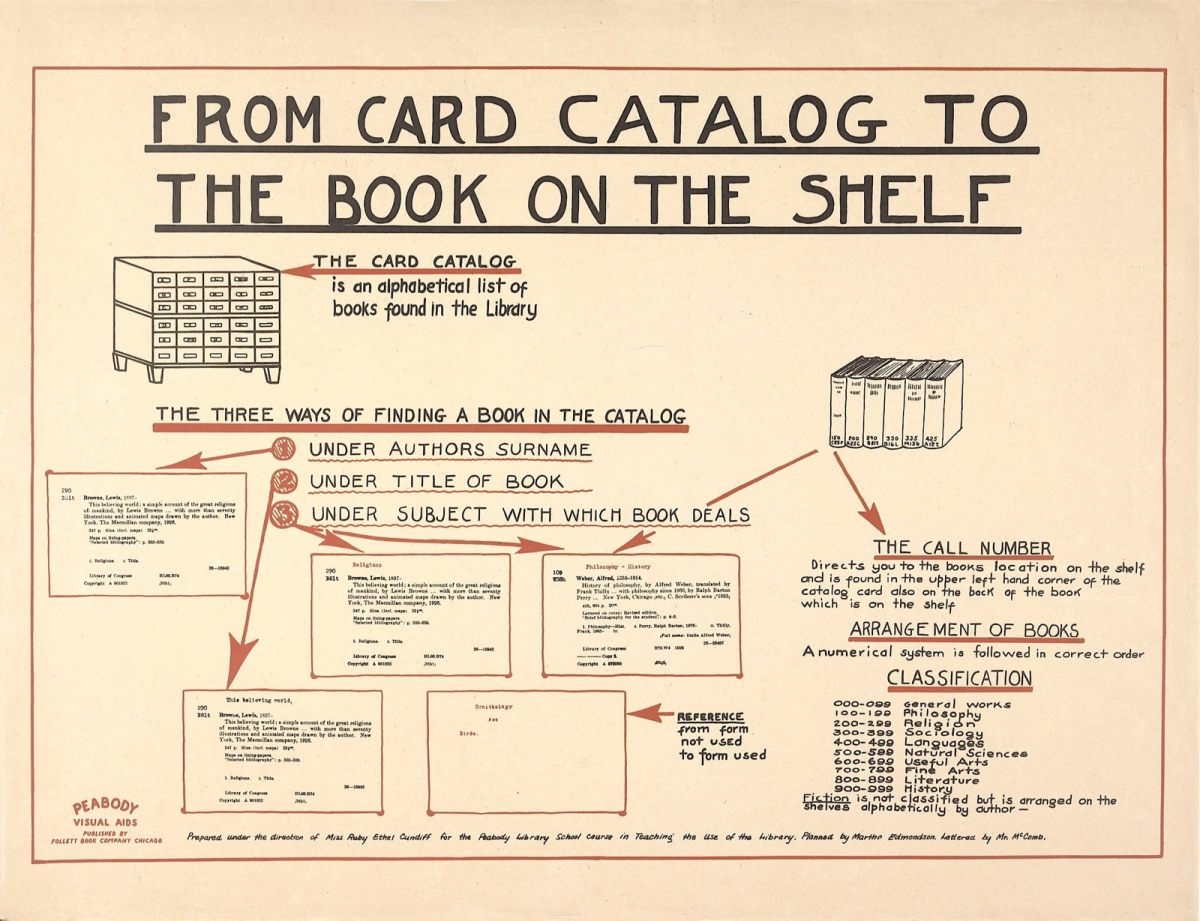
The chart is a helpful guide for finding books in the library. It’s clear, concise, and easy to understand. First, you find the catalog card of the book. The call number on the card directs you to the book’s location on the shelf.
I cover the world
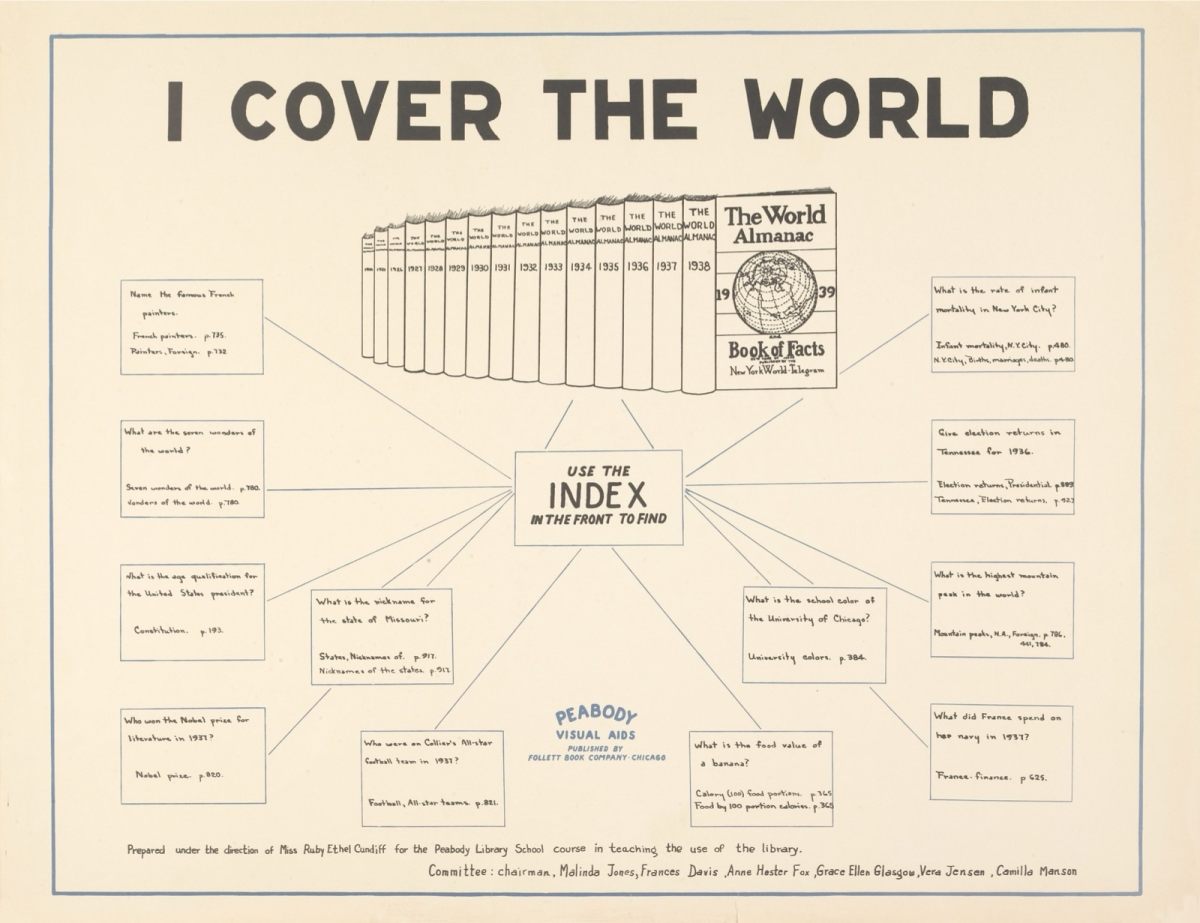
The chart is a short course in prompting. It shows how to use the index in the front of a multi-volume encyclopedia (here: The World Almanac Book of Facts, 1939) to find an entry with a relevant answer. Question ⇢ Topic ⇢ Answer.
What the catalog card tells us
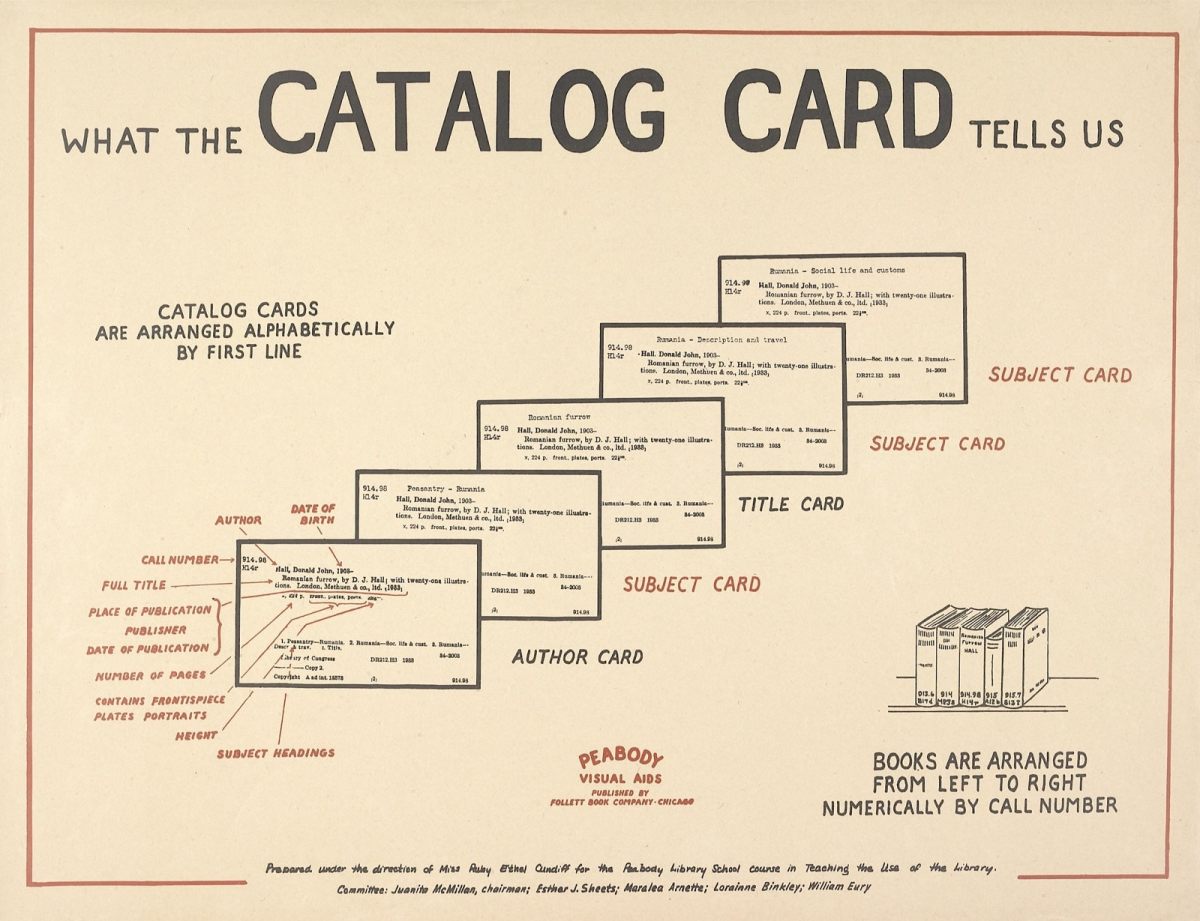
The chart describes in detail the elements of a library catalog card, as well as the types of cards.
The cards are arranged alphabetically by first line, regardless of which type you find in the catalog: author card, title card, or subject card. You can find a book on the shelf by following the call number on the card you’ve picked up.
In pursuit of prose and poetry
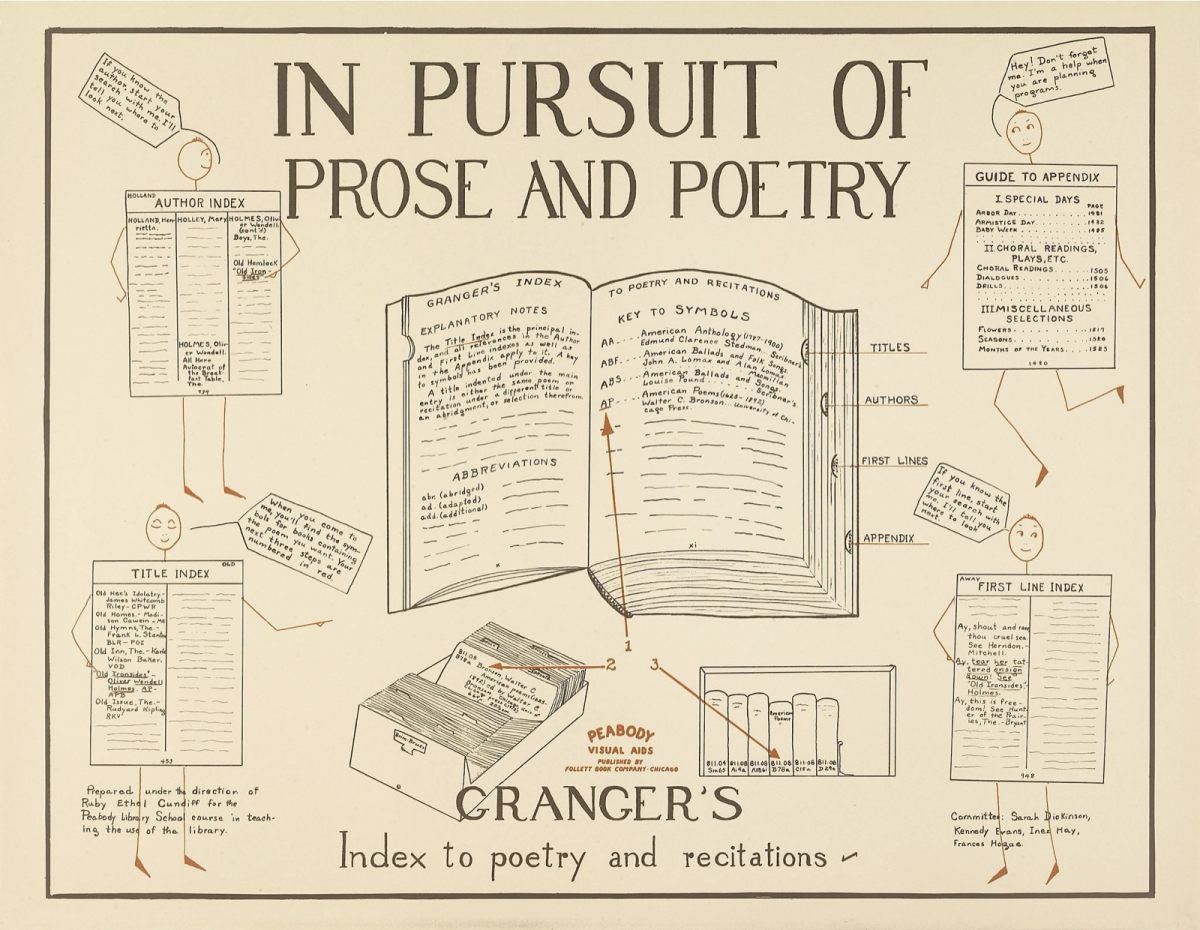
The chart is a simple guide how to navigate Granger’s Index to Poetry and Recitations. Published in 1934, the book was a reference manual for librarians and teachers, and included over 50,000 entries from 450 books.
The book was a pre-digital algorithm to find the information based on different criteria. For instance, it allowed you to find the book if you just knew its first lines.
Branches of knowledge
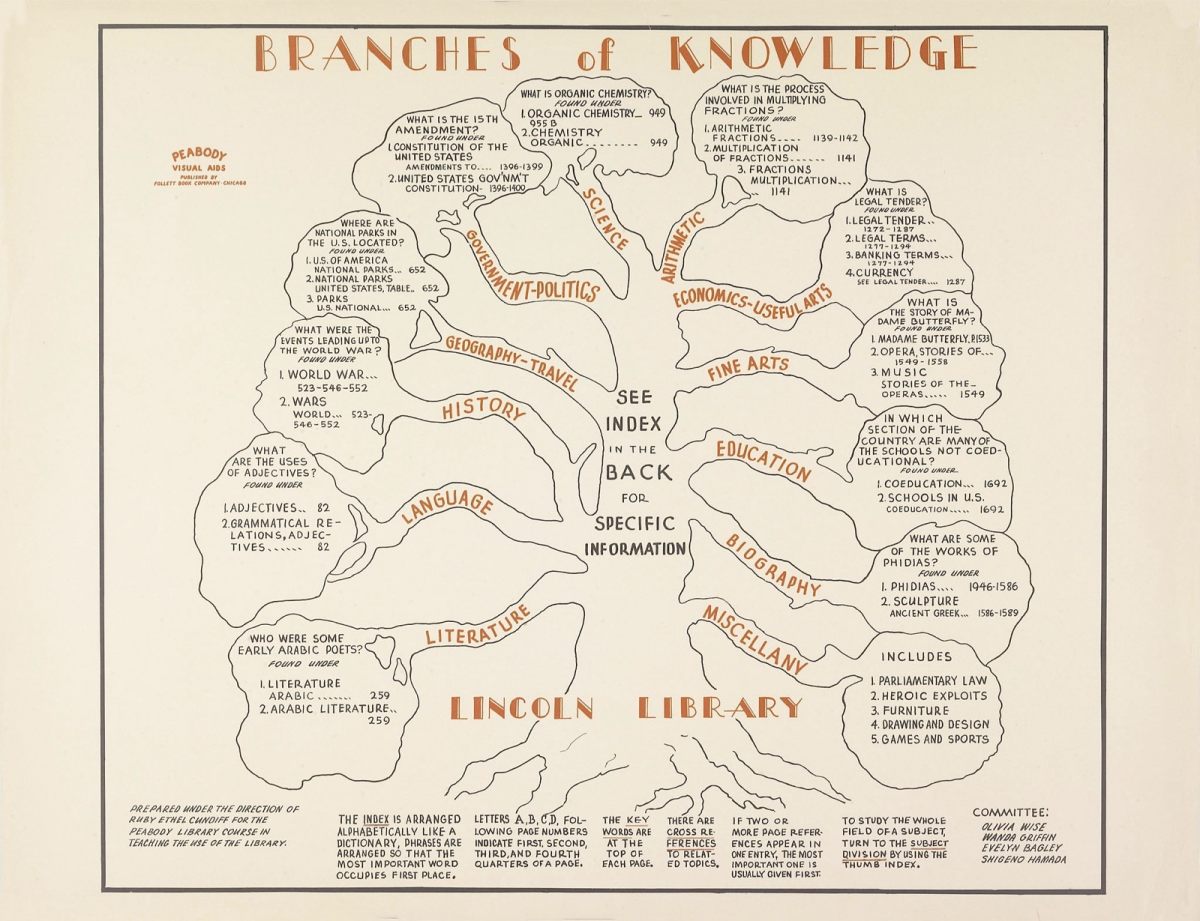
The diagram shows a tree of different branches of knowledge. Instead of plain descriptions, the branches are defined with a prompt. For instance: “What are the uses of adjectives” or “What is the story of Madame Butterfly”.
It’s clearly the way how your ChatGPT or Google Bard prompts are streamlined to make the tools provide the answer.
Get it right – I can answer all these questions
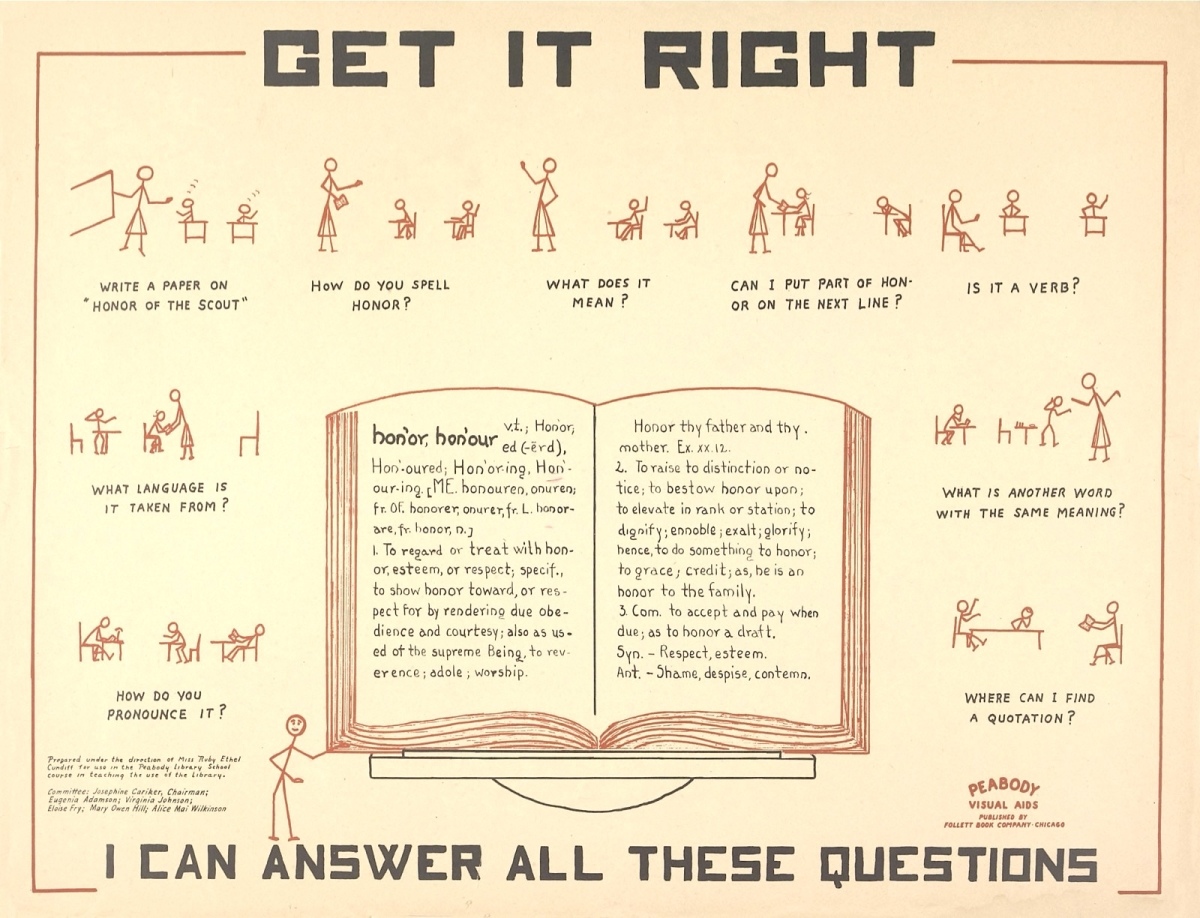
The poster explains how many questions (prompts) a single dictionary entry can answer. The word “honor” is used as an example.
If you want to get it right, you should use your brain instead of AI because the latter one is still hallucinating.
Magazine magic – reader’s guide to periodical literature
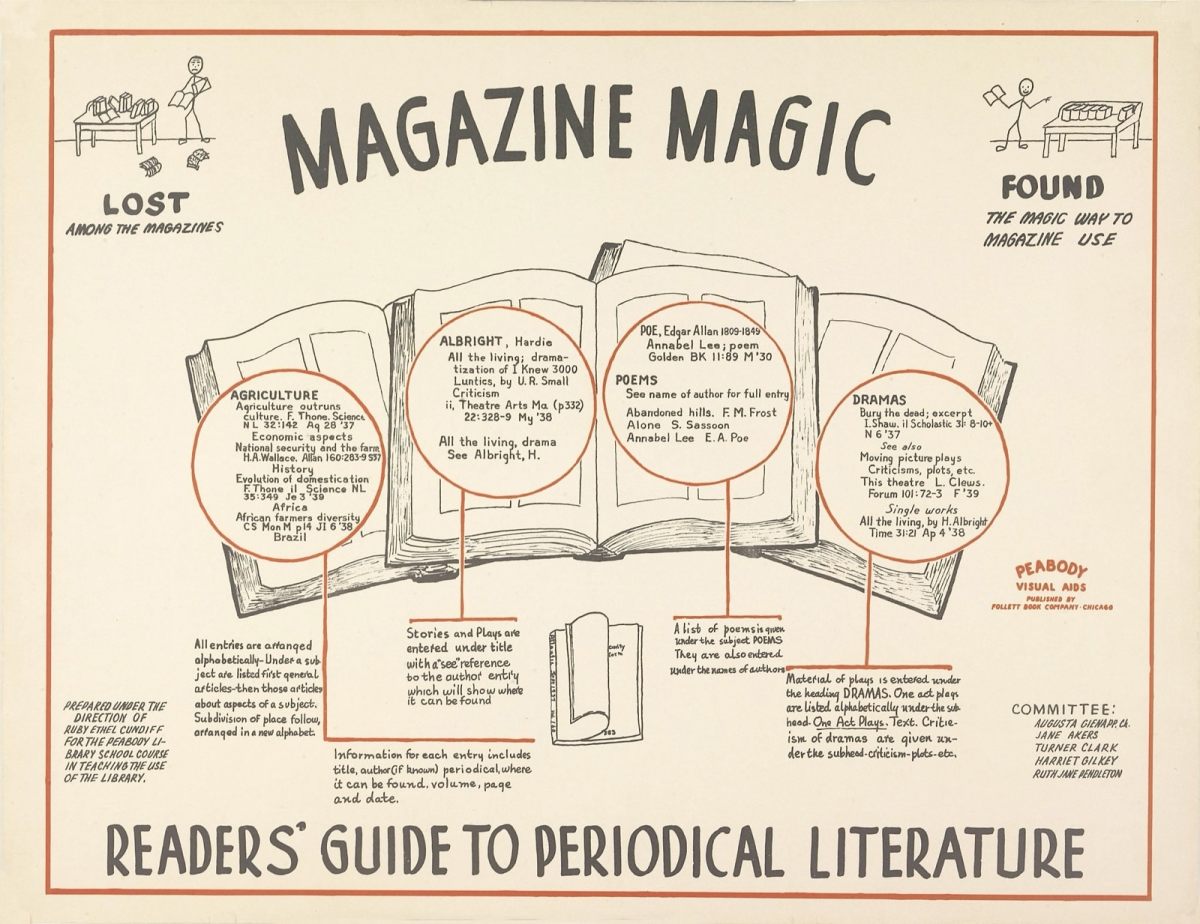
This guide shows how to use magazines and other periodical publications to find information and to learn about current events. It is a proof that magazines can be valuable research materials if they are used properly.
Atlas answers
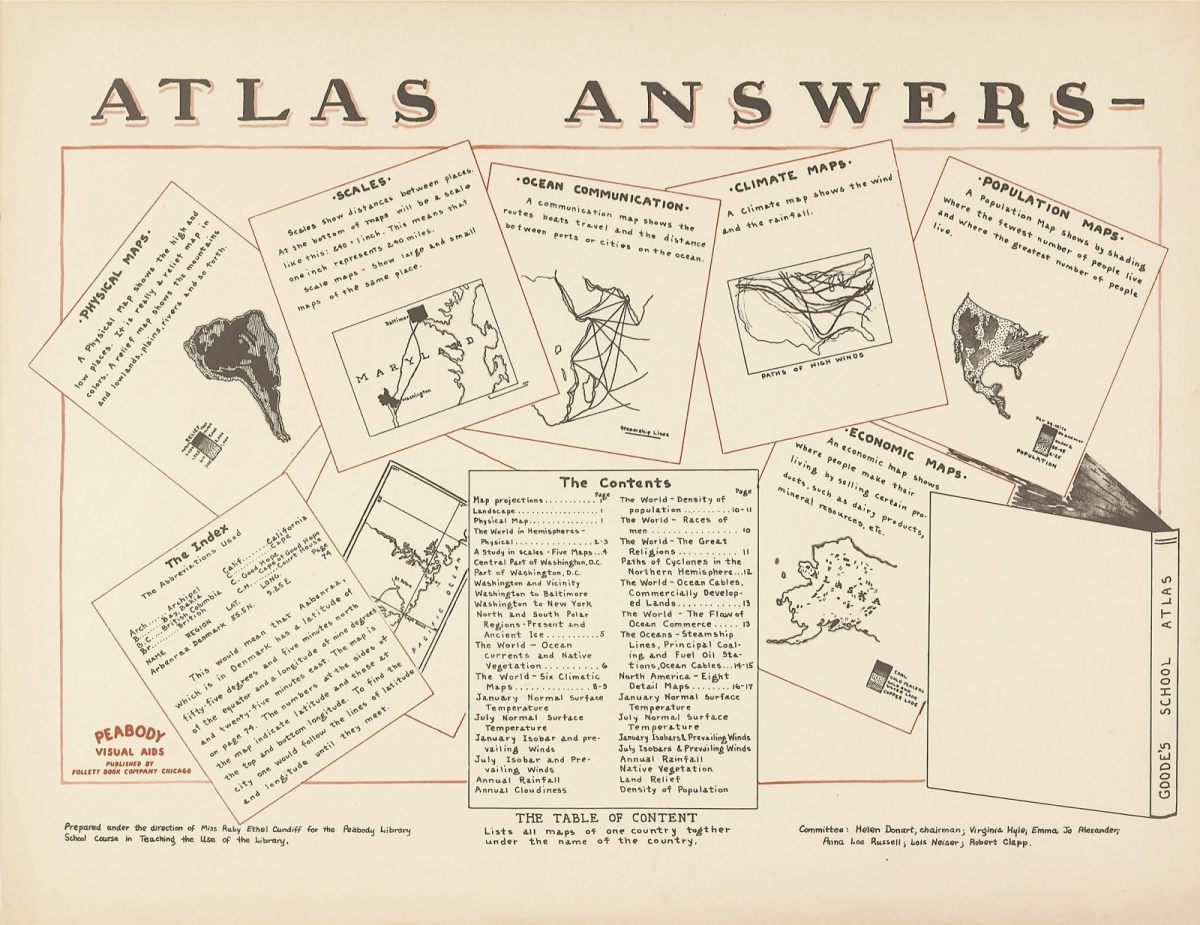
Here is a concise guide that provides all of the information that users need to find the information they need in an atlas. It also explains the different types of content you can find in the atlas.
Once you use the tool properly and effectively, regardless of whether it’s an atlas or Google Bard, you will find the right answer.
From Herodotus to Hart
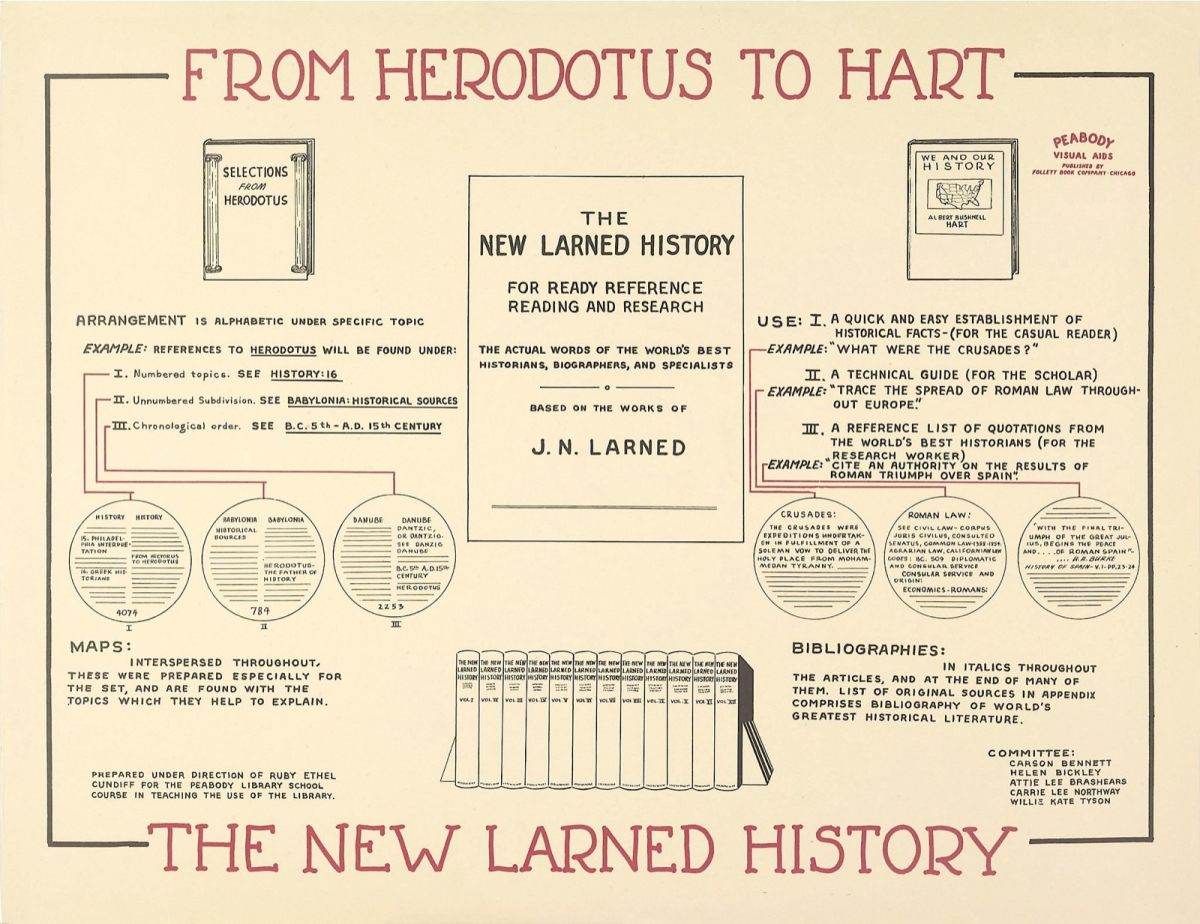
The chart explains how to use The New Larned History. It was a multi-volume encyclopedia of world history – one of the most popular and influential history encyclopedias of its time.
From cover to cover
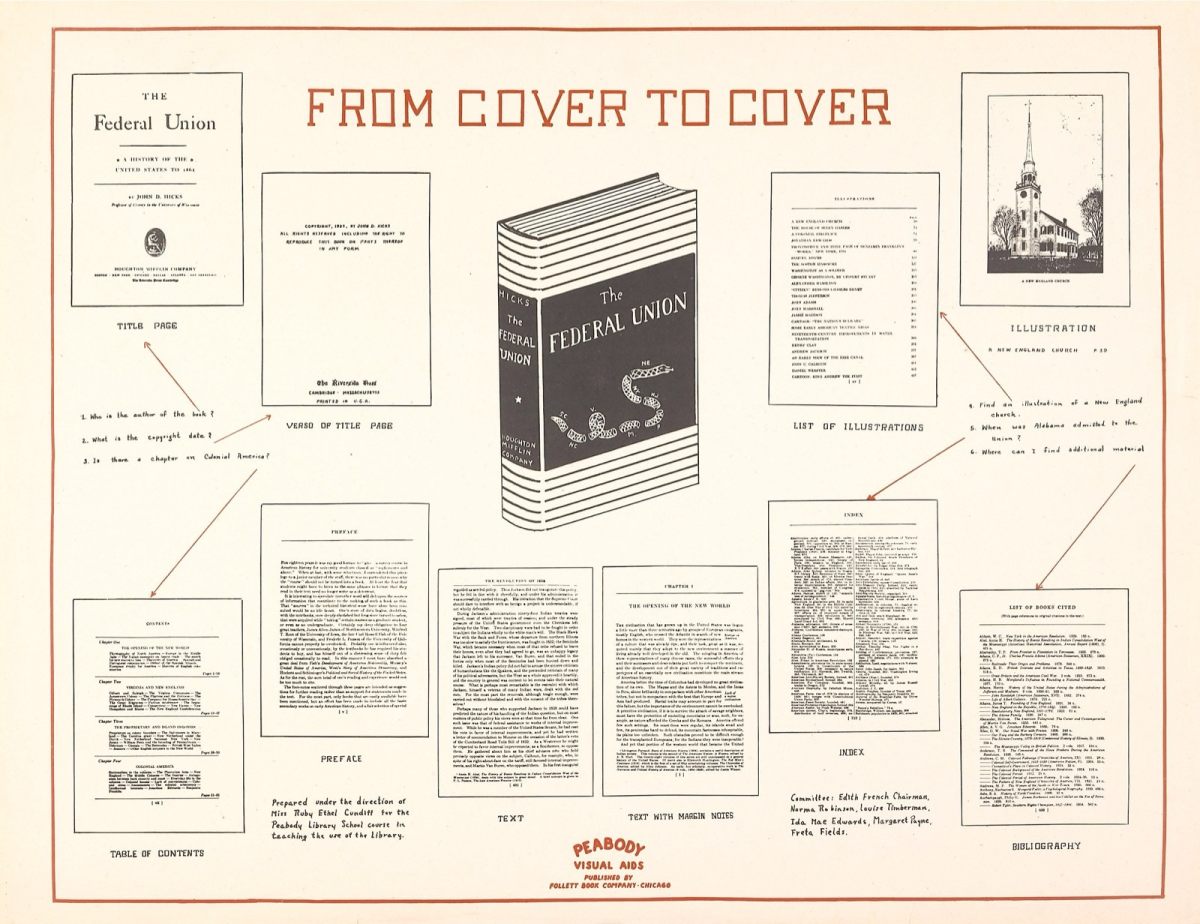
The chart that will let you learn about the parts of the book, from the front cover, table of content, preface to bibliography and index.
The circle of classified knowledge
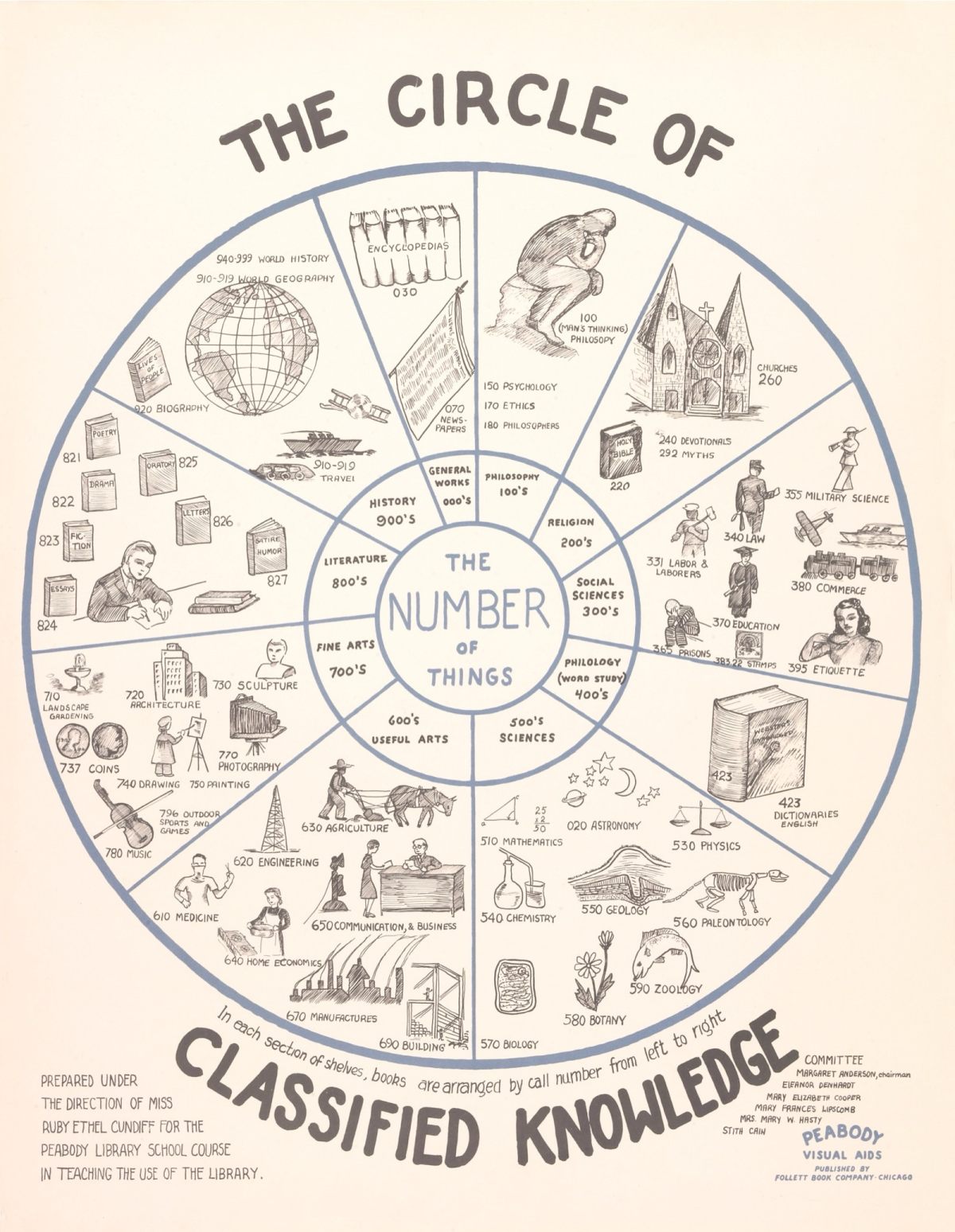
The Circle of Classified Knowledge is a stunning, visual explanation of the Dewey Decimal library classification system. The pie chart shows the ten main classes in a circle, with each class divided into subclasses.
This classic poster is one of the best ways to explain the Dewey Decimal Classification system and how to use it to find books in the library.
A query, a quest, a quotation – using a book of quotations
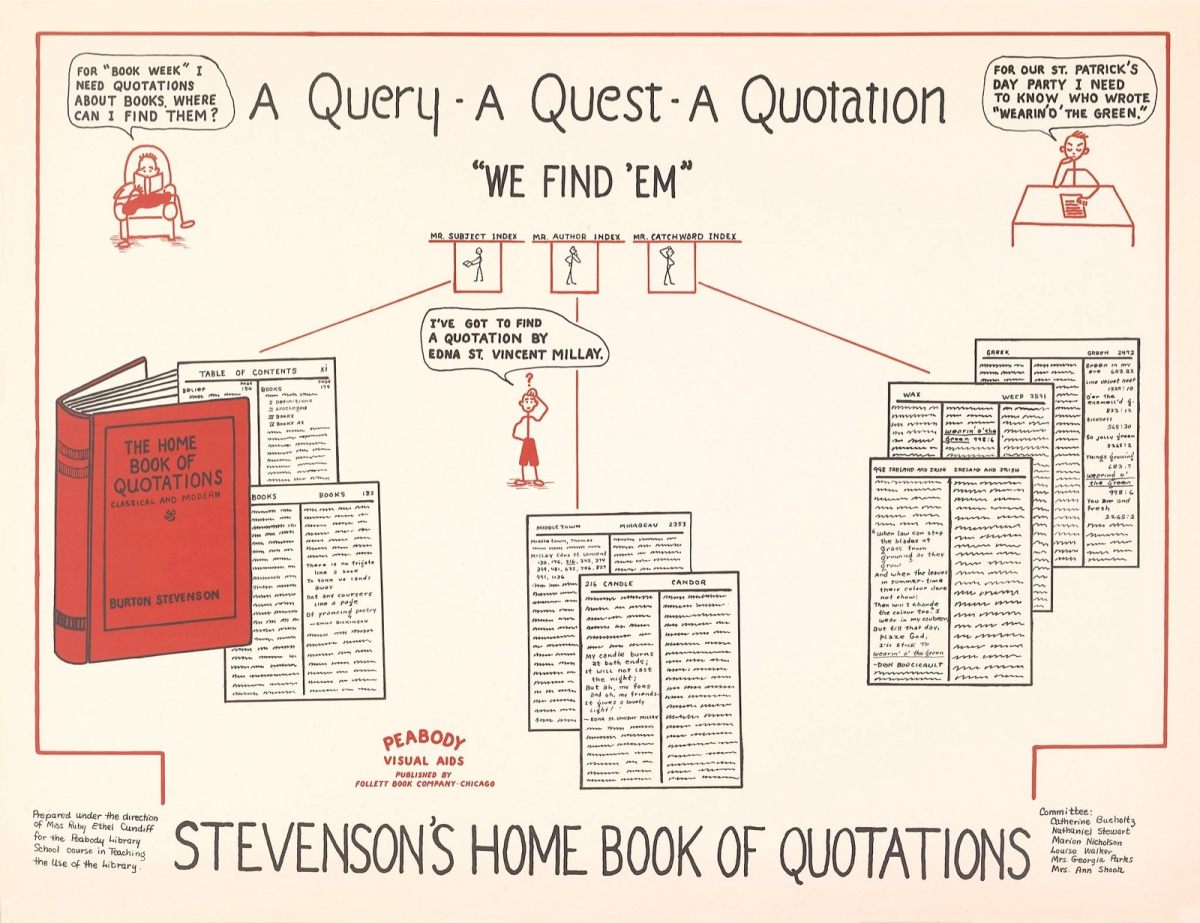
Back in the 1930s, people didn’t need the internet to find quotations. They were using quotation books. One of them was The Home Book of Quotations, compiled by Burton Egbert Stevenson.
The poster explains how to find a quotation using one of the three index types: subject, author, catchword.
How to find books in the United States Catalog

The chart explains how to use the United States Catalog (USC), which is a comprehensive catalog of all books published in the US.
This poster is a great example of how to fuel information to make it discoverable based on different search criteria.
What I want is facts
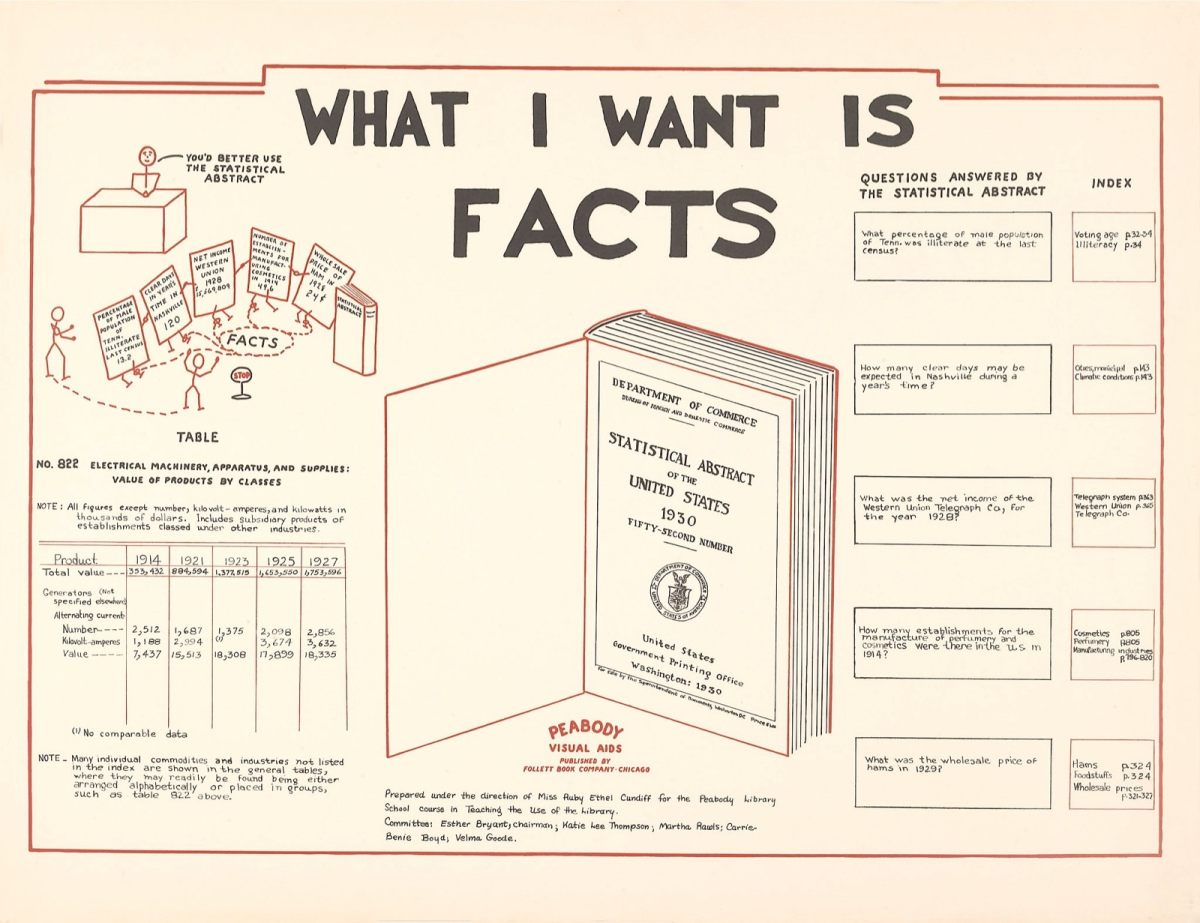
The poster explains how to use the Statistical Abstract of the United States. It was a government publication that contained statistics on a wide range of topics, such as population, education, and employment.
What question do you have about the US? Find a topic and you will find the answer. In the age of disinformation, the poster is a reminder to use only the reliable sources.
Keep reading. Here are more lists and tips for modern readers:
- The charts developed in the 1930s, and used to train librarians and teachers, explain how to process information and come […]
- Download high-resolution calendars in the pdf format that's large enough to be printed on the US letter or A4 paper.
- Here is a selection of iPhone apps that will help you learn English on the go. Udemy, eGrammar, eJoy, ELSA, […]
- Are you looking for a fresh-new gift that you could give yourself this year, but what you see in the […]
If you don’t want to miss future updates, make sure to enable email notifications in the comment box below. We are also waiting for you on WordPress Reader, Mastodon, Tumblr, and Facebook. You can also add us to your Google News channels.
If you buy an item via this post, we may get a small affiliate fee (details). We only use the cookies that are necessary to run this site properly (details).
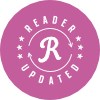


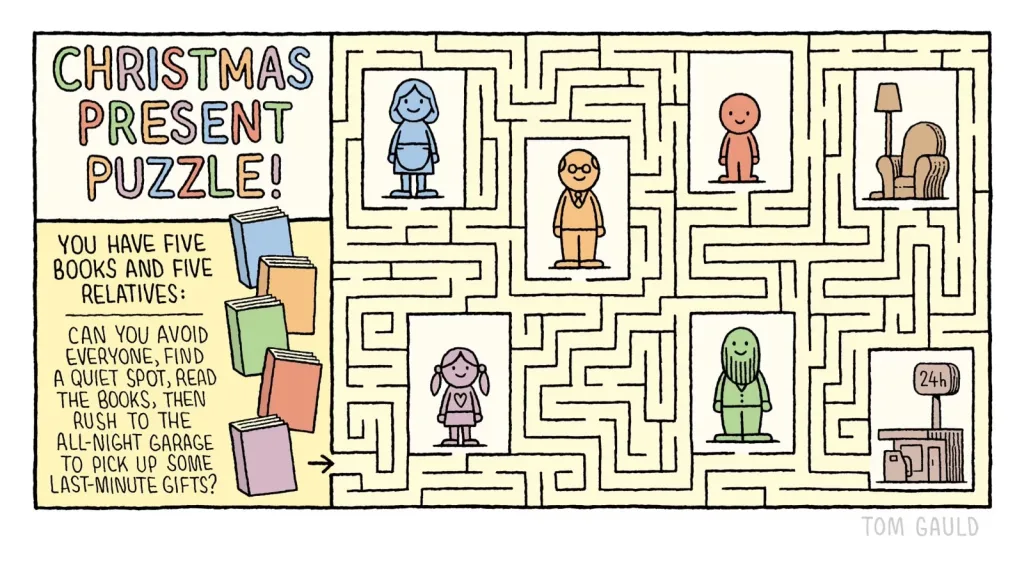
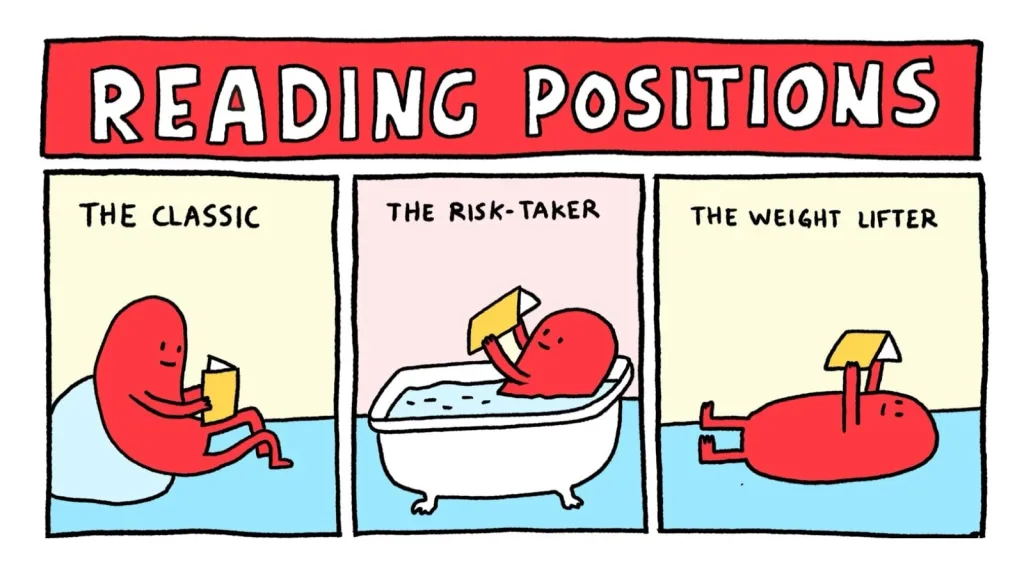

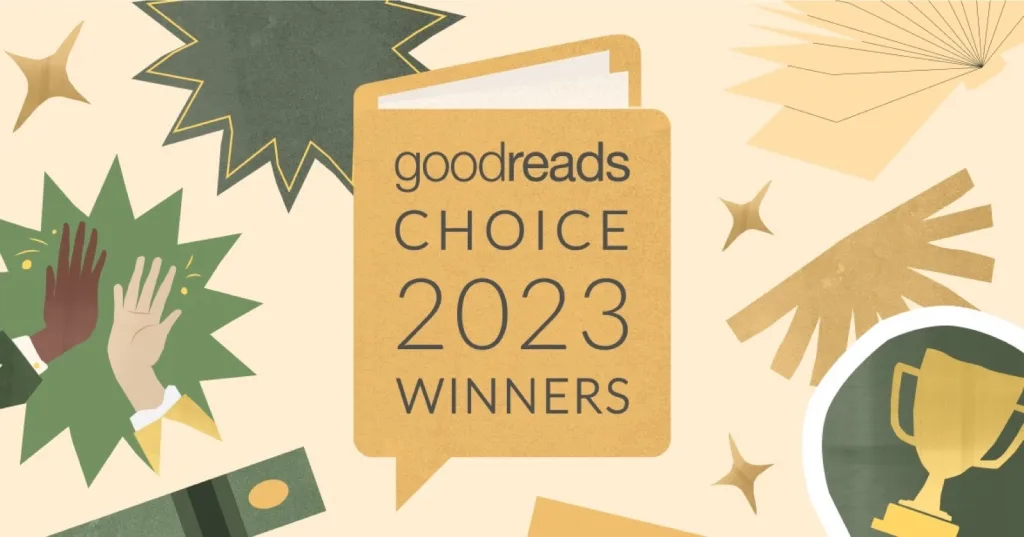

Leave a comment